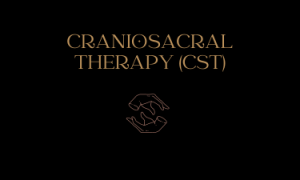As defined, Craniosacral Sacral Therapy (CST) is a type of bodywork that utilizes gentle touch and pressure on the head, spine, and pelvis. The objective is to alleviate restrictions around the brain and spinal cord, thereby enhancing the performance of the central nervous system.
CST originates in osteopathy, a medical field founded by Andrew Taylor Still in the late 19th century. Osteopaths believed that manipulating the skull bones can treat disease by improving blood flow and nerve function. William Sutherland, an osteopath, expanded on this idea in the 1930s by proposing the bones of the skull move in microscopic amounts in a rhythmic motion he called the “cranial wave.”
Modern CST continues to be based on this concept. Practitioners believe they can feel this cranial wave by gently palpating the skull and sacrum, assessing for areas of restricted motion. They then use delicate manual techniques, as light as 5 grams of pressure, to release restrictions in the soft tissues and fascia surrounding the spinal cord and brain. Proponents claim this enhances the body’s natural healing processes.
How Does Craniosacral Therapy Work?
Craniosacral Therapy (CST) is a therapy that uses gentle hands-on techniques to stimulate the body’s natural healing abilities. It focuses on the craniosacral system, which includes the skull, spine, and pelvis bones, as well as the cerebrospinal fluid and surrounding membranes that protect the central nervous system – which mostly controls the functions of the body. Therefore, disruptions in cerebrospinal fluid flow can contribute to pain and dysfunction.
The craniosacral rhythm results from the slight narrowing and widening of the skull and the gentle lengthening and shortening of the spine. These subtle movements occur approximately 6-12 times per minute and help circulate cerebrospinal fluid. The practitioner can feel this movement through the extremely light touch applied during CST. Anything heavier than 5 grams would not allow the detection of this delicate rhythm.
To encourage balanced flow, the practitioner may gently stretch the spine by pulling the occiput towards the top of the massage table. This stretch can open up congested areas in the craniosacral system. When tension is released, the patient is asked to take deep breaths.
Is Craniosacral Therapy Legitimate? A Critical Look at the Evidence - Richard Uzelac
Craniosacral therapy (CST), as mentioned, is a gentle hands-on treatment that focuses on improving the functioning of the craniosacral system, which encompasses cerebrospinal fluid that surrounds the brain and spinal cord. Though not yet widely accepted in mainstream medicine, craniosacral therapy has a legitimate scientific basis, and numerous studies demonstrate its effectiveness for a variety of conditions.
Critics argue that CST is pseudoscience because its theoretical model of cranial rhythms has not been scientifically validated. However, scientific understanding evolves over time. Acupuncture was once dismissed as pseudoscience, and now numerous studies confirm its efficacy, and it is recommended by many conventional doctors. CST may work through mechanisms not yet fully understood. “However, the lack of a complete scientific explanation does not negate the empirical evidence of its benefits.” Richard Uzelac adds.
In fact, multiple studies have demonstrated the effectiveness of CST for pain reduction. One study on patients with chronic pain found significantly more improvement after CST compared to sham treatment. Another study showed CST decreased pain and increased functioning for those with post-concussion syndrome. Studies also reveal CST can improve outcomes for colicky infants, autism, fibromyalgia, TMJD, and more. While larger trials are still needed, the initial research is quite promising.
Benefits of Craniosacral Therapy
Among the benefits of craniosacral therapy, improved circulation stands out. However, the enhanced flow of cerebrospinal fluid through the skull bones and sacral landmarks can also guide proper circulation.
The benefits of cranial sacral therapy may include relieving sinus pressure, headaches, and fibromyalgia symptoms. It can also be helpful for children with autism and cerebral palsy.
Who Can Benefit from Craniosacral Therapy?
Craniosacral therapy has been shown to be effective for various conditions, including:
Chronic muscle pain
Anxiety
Migraines
Sinus issues
Multiple Sclerosis
Temporomandibular Joint Pain
Epilepsy
Fibromyalgia – Gentle treatments can alleviate musculoskeletal pain associated with fibromyalgia.
Autism – The gentle approach of craniosacral therapy can introduce children with autism to calming touch, reduce anxiety, and encourage restful sleep.
Is Craniosacral Therapy Safe for Everyone?
While it’s a practice that is beneficial, little scientific evidence is shown. It’s important to note that craniotherapy is considered a CAM *complementary and alternative medicine practice and is not a conventional medical treatment for individuals with CSF Leaks.
A cerebrospinal fluid (CSF) leak happens when there is damage to the membrane surrounding the brain and spinal cord, causing the CSF to leak out. CSF leak can result in symptoms such as headaches, neck pain, and more. In cases of a known or suspected CSF leak, it’s generally advisable to seek medical attention from a qualified medical professional, such as a neurologist or neurosurgeon.
Richard Uzelac’s Takeaway:
The role of cerebrospinal fluid in neurological health is gradually being uncovered by scientific exploration. Emerging research is shedding light on how cerebrospinal fluid plays a role in shaping brain development and function. This growing understanding is leading scientists and researchers to reconsider the conventional notion of the brain as the sole director of the body, as it becomes evident that the entire nervous system operates as an interconnected entity. I am optimistic that further research into craniosacral therapy will validate its efficacy.








